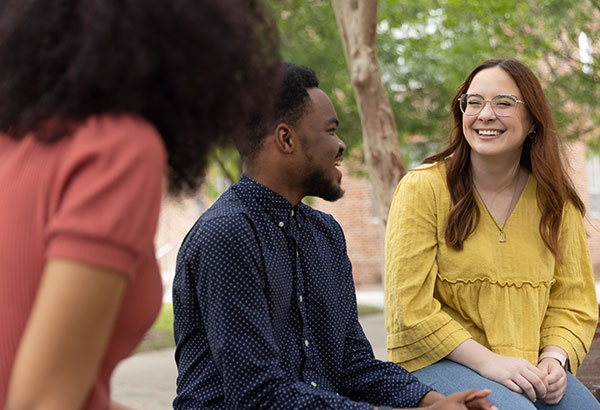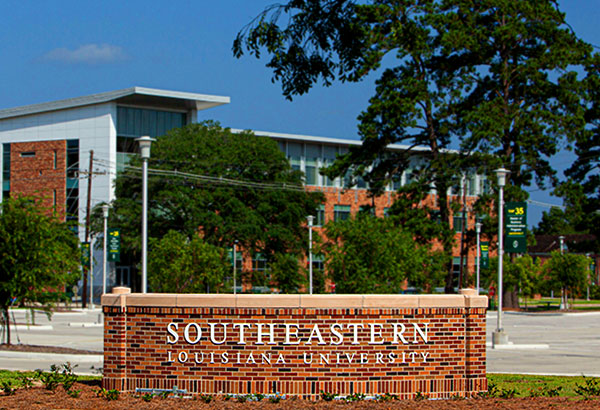Arrival Preparation
Arrival Checklist
After receiving your visa, there is still a lot to do before you arrive. Below are some questions that you may want to ask yourself to help you prepare. You may also download and print a Pre-Arrival Checklist to help you stay organized.
-
Have you received your I-20 or DS-2019 and obtained your F-1 or J-1 student entry visa?
-
Have you made arrangements for housing on or off campus?
-
Have you arranged your travel plans so that you arrive at Southeastern during business hours and early enough to attend the orientation programs?
-
Do you have a small amount of U.S. currency to cover the initial expenses of your arrival (buses, taxi, meals, etc.)?
-
Do you have enough US dollars to cover the expenses of settling into an apartment in Hammond, i.e. temporary housing, deposit on an apartment, telephone service, etc.? If you are bringing over $10,000 in cash to the United States, make sure you declare it on your customs form; otherwise the Customs officials have the right to confiscate the money and charge a fee.
-
Have you contacted the ISO to inform them of your arrival date and housing accommodations?
Directions From the Airport
Louis Armstrong International Airport in New Orleans is the main airport most people arrive at in Louisiana to get to Southeastern in Hammond. The airport is roughly 50 miles (80 kilometers) from Hammond. There are several ways to get from the airport to Southeastern:
-
Driving Directions - Should you rent a car or have someone drive you, this document will provide directions to Southeastern from the airport that you may print or use the navigation here. Please be aware of our business hours located below.
-
Amtrak - When you leave the airport, take a taxi to the New Orleans Union Passenger Terminal. You can book the trip from New Orleans to Hammond ahead of time by going here. We highly recommend you do so since trains run on a certain schedule. Once you arrive at the Amtrak terminal in Hammond, Southeastern Louisiana University is right around the corner by following North Oak Street directly to the university.
-
Airport Shuttle - There are shuttles that can pick you up from the airport in New Orleans and bring you to anywhere in Hammond. However, these options can be expensive, roughly $200 or more, and we recommend that you share this ride with other students who are arriving if possible. We also recommend that you book the shuttle in advance by going to airportshuttles.com.
Remember, if you are arriving after campus is closed and you will not be living on campus or have reserved your on campus accommodations, you will need to arrive at a hotel until you can check in with the International Services Office in North Campus Main Building in Enrollment Services. Please note that if you are not already approved for on campus housing, we cannot temporarily house you if you have not made any other accommodations. -
Taxi - We do not recommend that you take a taxi from the airport to Hammond due to the price. Fairs can run up to $150 or more.
Where To Go When You Get To Hammond
If you are living on campus
- If you have made on campus accommodations, you may check into your dorm room when you arrive. You may call the Resident Assistant On-Call over the residence you live in. This phone number will have been emailed to you by University Housing along with other information. If you arrive on campus and do not have access to a phone, you may go to the University Police Station at any time, day or night and the UPD will contact the Resident On-Call. The University Police Station is located in Pride Hall across from the library. You may ask your driver to drop you off at Pride Hall on SGA Drive. The address is 1301 SGA Drive, Hammond, LA 70401.
- Remember to pre-order your bedding, linens, towels, etc so they are there when you arrive. You can pre-order your dorm supplies at Residence Hall Linens
- Once you are settled in your room, you will then need to check in with the International Student Services Office in North Campus Main Building Enrollment Services Office. A map of campus can be found at www.southeastern.edu/map You will need to bring with you your passport and I-20/DS-2019.
- The International Services Office hours starting August 8th are from 7:30AM - 5:00PM, Monday - Thursday and 7:30AM - 12:30PM on Fridays. Summer hours are 7:00AM - 5:30PM, Monday - Thursday, and closed on Fridays.
If you are living off campus
- If you have decided to live off campus in an apartment or rented house, please make sure you have made your arrangements prior to arriving in Hammond. It is important to note that we cannot temporarily house you on campus. If you arrive without having made accommodations, you may need to stay in a hotel until you get settled.
- Once you are settled in your off campus accommodation or hotel, you will then need to check in with the International Student Services Office located in North Campus Main Building in Enrollment Services. A map of campus can be found at www.southeastern.edu/map You will need to bring with you your passport and I-20.
- The International Services Office hours starting August 8th are from 7:30AM - 5:00PM, Monday - Thursday and 7:30AM - 12:30PM on Fridays. Summer hours are 7:00AM - 5:30PM, Monday - Thursday, and closed on Fridays.
Southeastern Hours of Operation
General Business Hours Summer Hours
Monday - Thursday 7:30AM - 5:00PM Monday
- Thursday 7:00AM - 5:30PM
Friday 7:30AM - 12:30PM
Closed - Friday, Saturday, and Sunday
Closed Saturday and Sunday
Please see our hours of operation above. If you arrive on campus outside of these hours, there may be no one to assist you.
Cell phones
Selecting a phone plan may require some research. Check with other students and colleagues, particularly those from your home country, for suggestions.
Some international students and scholars keep their current phone and insert a SIM card, which can be purchased from local companies. Please note that if you purchase a SIM card in your home country before you arrive, it may not work in the U.S. Others choose to purchase a phone once here in the U.S.
Below are some suggested questions you can ask a cell phone company to help determine if their services are the best fit for your needs:
- Are pre-paid plans available? Is this a good option for the duration of my stay in the U.S.?
- What are the rates for calls, text messages (SMS), data transfers, and multimedia
messages (MMS)?
Cell phones in the U.S. may charge for both incoming and outgoing calls, texts, and data. - Is a deposit required to sign a contract? Will it be returned in full at the end of the contract?
- If there is a contract, is there a penalty or loss of deposit if the plan is terminated early?
- Can I use a phone I already own?
If you plan to use your own phone, be sure to obtain the code needed to “unlock” your phone for use abroad. - Does the new plan require a new phone? Is there a fee or monthly charge for a new
phone?
Some plans in the U.S. offer phones for $0 USD down, but may charge a monthly fee for the duration of the plan. - Will my phone be compatible with other international networks (GSM or CDMA)?
Airtime: Actual time spent talking on the cellular telephone. Most carriers bill customers based on how many minutes of airtime they use each month. Airtime charges during peak periods of the day vary from about 20 cents to more than 40 cents per minute, depending on the service plan selected. Most carriers offer reduced rates for off-peak usage.
Bluetooth: A wireless method of communications between devices.
Call Waiting: If your line is busy, callers are asked to wait while you are alerted to their incoming call.
Calling Plan: A rate plan selected by subscribers when they start up cellular service, usually consisting of a base rate for system access and a per-minute rate for usage. Service plans are designed to provide the most cost-effective rates for different types and amounts of usage by the cellular subscriber.
Data: This allows you to access the internet when you are not connected to wifi.
Land Line: Traditional wired phone service. Voice, video and data transmission technology that relies on wires. Also called wireline.
Local Calling Area: The geographical area that a customer may call without incurring toll charges.
Off-Peak Periods: Times when carriers offer discounted airtime charges. Each carrier designates its own off-peak hours, usually after normal business hours during the week, and weekends.
Pay-As-You-Go (PAYG): Essentially another term for pre-paid, meaning service that
is paid in advance, as-needed, instead of billed at the end of each month (post-paid).
Since service is paid for in advance, there is no generally no need for contracts
or credit checks with pay-as-you-go.
One difference from prepaid is that a PAYG plan can be set up to automatically
deduct funds from a bank account when depleted, instead of the balance simply becoming
zero, rendering the phone unusable until the account is manually replenished.
Peak: Highest-usage period of the business day when a cellular system carries the most calling traffic.
Roaming: The ability to use your cellular phone outside your usual service area – when traveling outside of the “home” service area defined by a service provider. Higher per-minute rates are usually charged for calls made or received while roaming. Long distance rates and a daily access fee may also apply.
Service Charge: The amount customers pay each month to receive wireless service. This amount is fixed, and to be paid monthly regardless of how much or how little customers use their wireless phones.
Service Plan: The rate plan you select when choosing a wireless phone service. A service plan typically consists of a monthly base rate for access to the system and a fixed amount of minutes per month. Service plans are designed to provide the most cost-effective rates for different types and amounts of usage by the cellular subscriber.
SIM card: A Subscriber Identity Module or a smart card that stores data for GSM cell phone users.
Storage: This is the space (gigahytes) that your device has available to keep files directly on it, such as photos and apps.
FAQ
Computer Labs on Campus - The university has a large number of computer labs open to all students, fully equipped with internet access, as well as other software programs and hardware devices, such as printers and scanners. Also, the university has a free rental program through the Office of Student Productivity Services. Students can check out equipment for a certain period of time, such as computers, video cameras, projectors, etc. at no cost. For more information on checking out equipment, click here.






